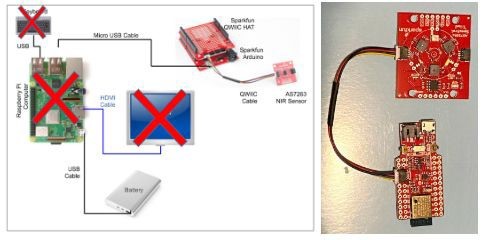STEM-In-Action Spring Scoop: Stumptown Glucobots
Another Friday, another spring scoop! For the last several weeks
we have been catching up with our STEM-In-Action grant recipient teams from our
2019 eCYBERMISSION year. If you aren’t familiar with the grant or what it
entails, the U.S. Army Educational Outreach
Program (AEOP) STEM-In-Action Grant awards eCYBERMISSION teams up to $5,000 to
develop their projects into mature and scalable solutions in their
community. Five teams all over the country were awarded this prize and each
week we have been catching up with them to see how their projects have been
progressing since the Fall. This week, we are headed to the West Coast to see
what Portland’s own Stumptown Glucobots have been up to!
--
We are the “Stumptown Glucobots,” a
neighborhood-based eCYBERMISSION team from Portland, Oregon comprised of 7th
graders attending Stoller Middle School. We are on a mission to build a
solution to measure blood sugar levels without using a single drop of blood!
According to the Centers for Disease
Control and Prevention (CDC), nearly 100 million U.S. adults are now living
with diabetes or prediabetes, and that number is expected to grow substantially
by the year 2025. The amount of children with juvenile diabetes (Type One), has
also grown to a staggering 200,000 kids, which is a dramatic increase compared
to past years. We decided to set ourselves on a mission to build a “Glucobot”,
a device that uses Near Infrared Sensors to measure blood sugar levels with
near-perfect accuracy without using a drop of blood from the patient.
As part of our project, we had built a
prototype Glucobot using a Raspberry Pi micro-computer and Sparkfun based Near
Infrared Sensor AS7263. Since getting the STEM-In-Action grant from
eCYBERMISSION, we started evolving our prototype to a substantial design that
can be deployed to hospitals for data collections that can better improve the
accuracy of our predictions.
We have made substantial changes to
our prototype design and eliminated nearly 50% of the parts reducing the
overall product cost. We all got trained in 3D printing designs during the last
three months. With the latest edition of the Dremel printer to our team’s
tools, we were able to create 3D printed designs to host the newly revised
AS7265x triad sensor that supports higher Near-Infrared wavelengths.
We have also developed a new 3D casing
design for the AS7265x sensor housing which reduces external light
contributions during sensor readings, thereby improving overall reading
accuracy.
We also visited Providence hospitals
in Portland, Intel and other technology companies to further understand recent
developments in sensor technology as well as share our project for additional
feedback. Our future goals are to introduce this design in the market for
hospitals so that we can collect more real and accurate data. We are planning
on making many more 3D printed models, including a device supporting Bluetooth
connectivity for hospital use.
Our biggest challenge was to perfect
the linear regression model that is used to predict blood sugar levels based on
Near Infrared sensor readings. We needed to collect dozens of samples to
accurately convert NIR values to mg/dL values. A lot of the time, the data
would be very inaccurate due to coding errors or just a lack of samples. We
managed to overcome this challenge by taking as many samples as possible and
proofreading our code multiple times.
We are most exciting about
productizing our design and impacting the maximum amount of people positively. Seeing
as our design’s final form has not yet been completed, we are happy to see the
changes we’ve made take shape and change our solution for the better. The most
ideal outcome for our project would be to streamline the process of creating
the most efficient design possible and let every diabetic in need of our
solution have access to our resources and technology to monitor blood sugar
levels without a drop of blood.
Until then, please stay tuned!
-Team Stumptown Glucobots
--
So amazing the advancements these 7th
graders are making to make it easier for people that suffer from diabetes or
prediabetes! So many Americans and people across the world suffer from this disease,
so their impact potential is global. Good luck to the team as they continue to
perfect their ideas!
-Mission Control
x







Comments
Post a Comment
We welcome your comments and expect that our conversation will follow the general rules of respectful civil discourse. This is a moderated blog, and we will only post comments from bloggers over 13 years of age that relate to eCYBERMISSION. We will review comments for posting within one business day. Bloggers are fully responsible for everything that they submit in their comments, and all posted comments are in the public domain. We do not discriminate against any views, but we reserve the right not to post comments.